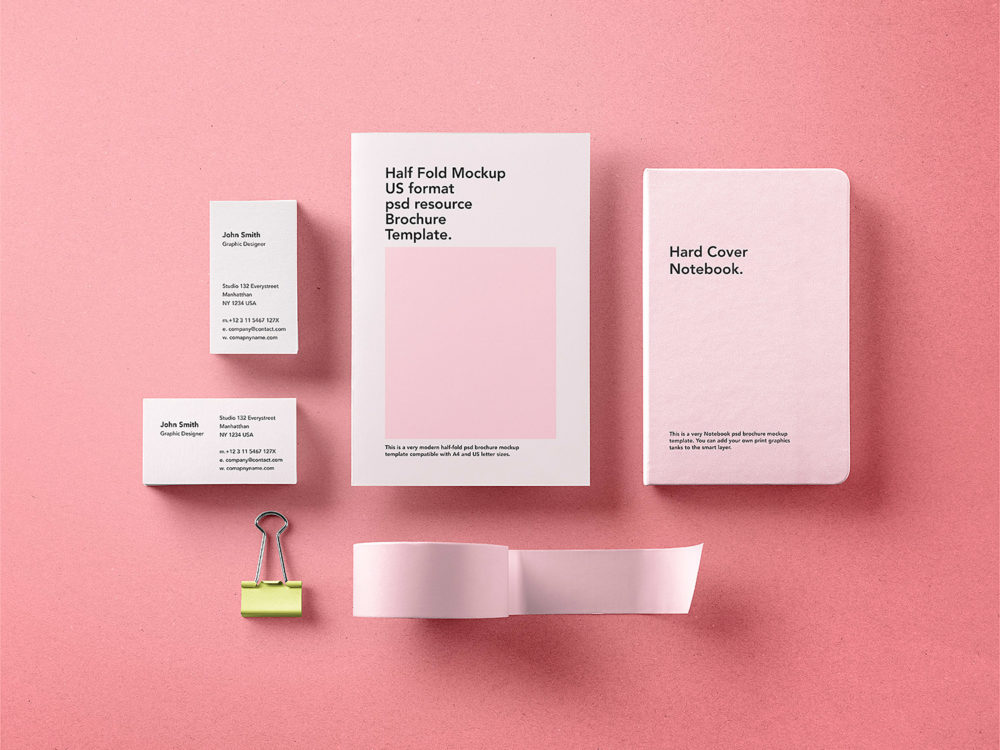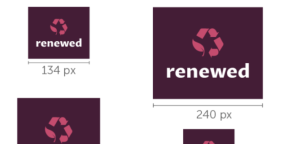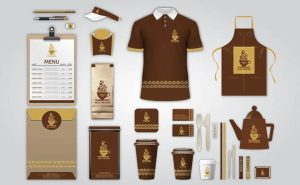Are you looking to create a brand that truly stands out? One of the most important aspects of building a strong brand is establishing a unique and cohesive brand aesthetic. Your brand aesthetic is the visual representation of your brand’s personality, values, and overall vibe. It encompasses everything from your logo and color scheme to your website design and social media content.
Creating a strong brand aesthetic can be a daunting task, but it’s essential for building brand recognition and establishing a loyal customer base. Your brand aesthetic is the first thing potential customers will see when they interact with your brand, so it’s important to make a strong first impression. By developing a clear and consistent brand aesthetic, you can communicate your brand’s message and values in a way that resonates with your target audience.
In this article, we’ll explore the ins and outs of brand aesthetics and provide practical tips for creating a cohesive and memorable brand aesthetic. We’ll discuss the key elements of a strong brand aesthetic, including color, typography, imagery, and tone of voice. We’ll also look at real-world examples of successful brand aesthetics and provide actionable advice for developing your own. Whether you’re just starting out or looking to refresh your brand’s visual identity, this article will provide the guidance you need to create a standout brand aesthetic.
Understanding Brand Aesthetics
When it comes to building a successful brand, aesthetics play a crucial role. Brand aesthetics refer to the visual elements that make up a brand’s identity, including its logo, color scheme, typography, imagery, and overall design.
Your brand’s aesthetic should reflect your company’s personality, values, and mission. It should also be consistent across all marketing materials, including your website, social media profiles, packaging, and advertisements.
Creating a strong brand aesthetic can help you stand out from competitors and make a lasting impression on potential customers. It can also help you build brand recognition and loyalty over time.
To create a successful brand aesthetic, you should consider the following elements:
- Color Scheme: Choose a color scheme that reflects your brand’s personality and values. Different colors can evoke different emotions, so it’s important to choose colors that align with your brand’s message.
- Typography: Choose fonts that are easy to read and reflect your brand’s personality. Consider using a combination of fonts to create visual interest.
- Imagery: Use imagery that is relevant to your brand and appeals to your target audience. Make sure all images are high-quality and consistent with your brand’s aesthetic.
- Design Elements: Consider incorporating design elements such as patterns, textures, and shapes to add visual interest to your brand’s materials.
Overall, creating a strong brand aesthetic takes time and effort, but it can pay off in the long run. By investing in your brand’s visual identity, you can create a powerful marketing tool that helps you stand out from competitors and connect with your target audience.
Importance of Brand Aesthetics
In the world of marketing, brand aesthetics is a crucial element in the success of any business. It is the visual representation of your brand that attracts consumers, maintains audience engagement, and ultimately drives sales. In this section, we will discuss the importance of brand aesthetics and how it influences consumer perception and brand identity.
Influence on Consumer Perception
Your brand’s aesthetic plays a significant role in how consumers perceive your business. A visually appealing and consistent brand aesthetic can make your brand more memorable and recognizable. It can also create a sense of trust and professionalism, which can lead to increased brand loyalty and customer retention.
On the other hand, a poorly executed brand aesthetic can turn off potential customers and create a negative perception of your brand. Inconsistent branding can also confuse consumers and make it difficult for them to recognize your brand across different channels.
Role in Brand Identity
Your brand’s aesthetic is a reflection of your brand identity. It communicates your brand’s personality, values, and tone of voice to your target audience. Your brand aesthetic should be consistent across all marketing channels, including your website, social media, and advertising campaigns.
A well-executed brand aesthetic can differentiate your brand from competitors and create a unique brand identity that resonates with your target audience. It can also help you establish a strong brand reputation and increase brand awareness.
In conclusion, your brand aesthetic is a crucial element in the success of your business. It influences consumer perception and plays a significant role in your brand identity. By creating a visually appealing and consistent brand aesthetic, you can differentiate your brand from competitors, establish a strong brand reputation, and increase brand awareness.
Elements of Brand Aesthetics
Your brand’s aesthetic is the visual representation of your brand’s personality, values, and messaging. It’s the first impression that your audience gets of your brand, and it’s essential to make it count. Here are the key elements of brand aesthetics that you should consider when developing your brand’s visual identity:
Logo Design
Your logo is the most recognizable element of your brand. It’s the visual symbol that represents your brand, and it should be memorable, unique, and easily identifiable. A good logo design should be simple, versatile, and scalable, so it can be used across different mediums and sizes.
When designing your logo, consider your brand’s personality and values. Your logo should reflect your brand’s identity and be consistent with your brand’s messaging. Choose colors, fonts, and shapes that align with your brand’s aesthetic to create a cohesive visual identity.
Color Palette
Your brand’s color palette is another crucial element of your brand’s aesthetic. Colors have a psychological impact on your audience, and they can evoke different emotions and moods. Choose colors that reflect your brand’s personality and values, and use them consistently across all your brand’s visual elements.
When selecting your brand’s colors, consider the color theory and the meaning of different colors. For example, blue is often associated with trust and reliability, while red can evoke excitement and passion. Use your brand’s primary color as the dominant color in your visual elements, and use secondary colors to complement and accentuate your brand’s identity.
Typography
Typography is the art of arranging type to make written language legible, readable, and appealing when displayed. Your brand’s typography should be consistent across all your visual elements, and it should reflect your brand’s personality and values. Choose fonts that are easy to read and align with your brand’s aesthetic.
When selecting your brand’s typography, consider the font style, weight, and size. Serif fonts are often associated with tradition and elegance, while sans-serif fonts are more modern and clean. Use different font weights and sizes to create hierarchy and emphasis, and make sure your typography is legible across different mediums and sizes.
Imagery
Your brand’s imagery includes all the visual elements that support your brand’s messaging and identity, such as photographs, illustrations, and graphics. Your imagery should be consistent with your brand’s aesthetic and reflect your brand’s personality and values.
When selecting your brand’s imagery, consider the style, tone, and subject matter. Choose images that align with your brand’s messaging and values, and use them consistently across all your visual elements. Use different types of imagery to create variety and interest, and make sure your imagery is high-quality and relevant to your brand’s identity.
In conclusion, the elements of brand aesthetics are essential to creating a strong and memorable visual identity for your brand. By considering your logo design, color palette, typography, and imagery, you can create a cohesive and consistent visual identity that reflects your brand’s personality and values.
Creating a Consistent Brand Aesthetic
Your brand aesthetic is the visual representation of your brand. It is what sets your brand apart from the competition and helps customers identify your brand. Creating a consistent brand aesthetic is crucial for building brand recognition and loyalty. Here are some tips on how to create a consistent brand aesthetic:
Brand Style Guide
A brand style guide is a document that outlines the visual elements of your brand. It includes guidelines for your logo, color palette, typography, imagery, and more. A brand style guide ensures that all visual elements of your brand are consistent across all platforms and channels.
When creating a brand style guide, consider the following elements:
- Logo: Your logo is the face of your brand. It should be recognizable and memorable. Your brand style guide should include guidelines for logo usage, such as size, placement, and color variations.
- Color Palette: Your brand’s color palette should be consistent across all platforms. Choose a primary color and a secondary color that complement each other. Your brand style guide should include the hex codes for each color.
- Typography: Choose a font or set of fonts that represent your brand’s personality. Your brand style guide should include guidelines for font usage, such as font size, weight, and spacing.
- Imagery: Choose images that represent your brand’s values and personality. Your brand style guide should include guidelines for image usage, such as image style, resolution, and size.
Consistency Across Platforms
Consistency is key when it comes to building a strong brand aesthetic. Your brand aesthetic should be consistent across all platforms, including your website, social media, and marketing materials.
When creating content for different platforms, consider the following:
- Layout: Use a consistent layout for your website and marketing materials. This includes the placement of your logo, typography, and imagery.
- Color: Use your brand’s color palette consistently across all platforms.
- Imagery: Use images that are consistent with your brand’s style and values.
By creating a consistent brand aesthetic, you can build brand recognition and loyalty. Your customers will be able to identify your brand easily, no matter where they see it.
Case Studies of Successful Brand Aesthetics
When it comes to branding, aesthetics can make or break a brand’s success. Here are a few case studies of brands that have successfully implemented their brand aesthetics.
Glossier
Glossier is a beauty brand that has gained a cult following for its minimalist packaging and pastel hues. The brand’s packaging is clean, simple, and functional, with a focus on white space and typography. This aesthetic is carried through to the brand’s website, social media, and even its physical stores. Glossier’s success can be attributed, in part, to its strong and consistent brand aesthetics.
Apple
Apple is known for its sleek and modern aesthetic, which is reflected in its product design, packaging, and marketing. The brand’s minimalist approach has helped it stand out in a crowded market and has become a key part of its brand identity. Apple’s aesthetic is so strong that its products are instantly recognizable, even without the brand name.
Coca-Cola
Coca-Cola’s red and white color scheme is one of the most recognizable brand aesthetics in the world. The brand’s logo, which features a cursive script, has remained largely unchanged since it was first introduced in 1887. This consistent branding has helped Coca-Cola become one of the most successful and iconic brands in history.
Nike
Nike’s “swoosh” logo is one of the most recognizable brand logos in the world. The brand’s aesthetic is focused on athleticism and performance, with bold typography and a dynamic color palette. This aesthetic is carried through to Nike’s advertising campaigns, which often feature high-energy visuals and inspirational messaging.
Airbnb
Airbnb’s brand aesthetic is focused on travel and adventure. The brand’s logo features a simple, stylized illustration of a house, which is meant to represent the idea of “belonging anywhere.” This aesthetic is carried through to the brand’s website, which features stunning photography of travel destinations around the world. Airbnb’s strong brand aesthetics have helped it become one of the most successful travel brands in the world.
Successful brand aesthetics are essential for creating a strong brand identity and standing out in a crowded market. By studying these case studies, you can gain insights into how to create a strong and consistent brand aesthetic for your own brand.
Future Trends in Brand Aesthetics
As technology and consumer preferences continue to evolve, it’s important to stay ahead of the curve when it comes to your brand’s aesthetic. Here are some future trends to keep in mind:
Minimalism
In recent years, we’ve seen a rise in minimalistic design across various industries. This trend is likely to continue in the future, as consumers are drawn to clean, simple aesthetics that are easy on the eyes and easy to navigate. When it comes to branding, this means focusing on a simple color palette, clean typography, and a streamlined logo.
Sustainability
As consumers become more environmentally conscious, sustainability is becoming an increasingly important factor in brand aesthetics. Brands that prioritize sustainability in their design choices will likely be viewed more favorably by consumers. This could involve using eco-friendly materials in packaging, incorporating natural elements into branding, or simply using a color palette that reflects a commitment to the environment.
Personalization
Personalization has been a buzzword in marketing for a while now, but it’s likely to become even more important in the future. Consumers want to feel like brands are speaking directly to them, and personalized branding can help achieve this. This could involve using personalized messaging, incorporating user-generated content into branding, or even creating customized packaging for each individual customer.
Augmented Reality
As technology continues to advance, augmented reality (AR) is becoming an increasingly popular tool for brands. AR can be used to create immersive brand experiences that go beyond traditional branding methods. For example, a makeup brand could use AR to allow customers to try on different shades of lipstick virtually before making a purchase. As AR technology continues to improve, we can expect to see more brands incorporating it into their branding strategies.
Bold Colors and Typography
While minimalism is still a popular trend, we can also expect to see a rise in bold, eye-catching branding in the future. This could involve using bright colors, unique typography, or even incorporating bold patterns into branding. The key is to create a brand aesthetic that stands out and grabs the attention of consumers.
Overall, the future of brand aesthetics is all about finding a balance between simplicity and boldness, while also incorporating elements of personalization and sustainability. By staying ahead of these trends, you can create a brand aesthetic that resonates with your target audience and helps your brand stand out in a crowded market.
Conclusion
Congratulations! You’ve made it to the end of this article on brand aesthetics. By now, you should have a good understanding of what brand aesthetics are and why they matter to your business.
In summary, here are some key takeaways:
- Your brand aesthetics are the visual representation of your brand that communicates its personality, values, and message to your target audience.
- A strong brand aesthetic can help you stand out from the competition, build trust with your customers, and create a cohesive brand experience.
- To create a successful brand aesthetic, you need to consider factors such as color, typography, imagery, and overall design.
- It’s important to be consistent with your brand aesthetic across all channels, including your website, social media, and marketing materials.
- Finally, don’t be afraid to experiment and evolve your brand aesthetic over time as your business grows and changes.
Remember, your brand aesthetics are an important part of your overall brand strategy, and they can have a significant impact on how your business is perceived by your target audience. By investing time and resources into creating a strong, cohesive brand aesthetic, you can set your business up for long-term success.
Barry Edwards is a digital marketing expert with a deep understanding of content strategy, logo, and branding principles. Holding a Bachelor’s degree in Marketing from Beaconhill College, he offers valuable insights on digital marketing trends and strategies through his writing. Follow Barry’s work to stay updated on the latest in online marketing and branding.



